How long can you drive on worn out shocks and struts? It depends. Like other parts on your vehicle, they rarely fail overnight. Instead, it’s a process where they gradually wear down, causing more problems with your drive. Eventually, their failure can lead to an accident.
But before shocks and struts fail, they start giving warning signals. That’s where you should start paying attention. This gives you ample warning, and provides you with enough time to get them replaced.
How shocks and struts work
Shocks and struts work as stabilizers. Every turn you make, every time you accelerate or step on the brakes, the shocks and struts work to keep your vehicle under control. Without shocks and struts, you would feel every bump in the road.
Today’s vehicles use shocks, struts, or a combination of the two. Though the two are often used interchangeably, there is a difference. Shocks are individual components of the suspension system, while struts are a structural component.
A shock absorbers job is to control the spring and suspension movement by converting kinetic energy into heat energy, and dissipating it through hydraulic fluid. All modern day shock absorbers are velocity sensitive, which means with faster movement comes more resistance. That allows the shock absorber to adjust to the varying road conditions. This protects you from bouncing, swaying, or diving as you stop and go in traffic.
A strut is a structural part of the suspension, taking the place of the control arm and upper ball joint of the conventional system. It’s lighter and takes up less space than a shock absorber. Struts provide the same damping function as shock absorbers. But they also provide structural support for the vehicle’s suspension. It supports the spring, and keeps the tire in alignment. It also bears the side load placed on the suspension. While struts also provide comfort and handling, they also are designed for wheel alignment and prevent wear on other parts of the suspension system.
How shocks and struts can cause an accident
Shocks and struts gradually wear out over time. You’ll start noticing a difference in the way your vehicle handles as you drive. If they fail, it can lead to an accident as you:
Drive over bumps and dips
If your shocks and struts aren’t working, you lose your ability to navigate. Bumps and dips can cause vibration, which may cause you to lose control over your vehicle. Taking a speed bump too fast may make it feel like your car is “flying.”
Steer around curves and turns
If your vehicle isn’t properly gripping the road, it can cause you to over or understeer, putting you in a dangerous situation.
Lose control over your brakes
Your shocks and struts and anti-lock braking system work together to help you drive. If your shocks and struts aren’t working, that passes into your braking system. If you’re driving along on a bumpy road, for example, you may lose control over your steering, and not have the ability to brake for other objects in your path.
Cause other parts to wear down faster
Your vehicle consists of 10,000 working parts, all coming together to help you stay comfortable and safe while you drive. If one part wears down and fails, it impacts every other part of the system. Shocks and struts can affect a variety of parts, including tires, brakes, and more. Following a regular maintenance schedule is the easiest way to ensure every component is working well to help you drive safely down the road.
What are the warning signs of failing shocks and struts?
Luckily, shocks and struts don’t wear down without warning. If you notice any of these warning signs, schedule an appointment with a mechanic as soon as possible.
- You feel a constant up and down movement as you drive, especially at higher speeds. The movement may be slight, but once you notice it, it’s time for an inspection.
- When you turn, you notice the vehicle leans to one side or the other. It feels wobbly as it completes the action for the turn.
- The front end dives down as you brake, especially when you hard brake. You may feel like you need to apply more pressure to come to a complete stop.
- The rear squats down as you accelerate as the front end rises, especially with hard acceleration.
- You feel bouncing from the tires, especially as you hit a bump or dip in the road. It may bounce for some time, or produce a clunking noise as it bounces.
- You notice unusual tire wear. This is because the tires aren’t fully connecting with the road.
- You notice a fluid leak around the shocks and struts. This is a sign the seal is broken and it no longer can properly function.
Is it dangerous to drive with bad shocks and struts?
In short, the answer is: Yes.
Like other parts on your vehicle, each is installed for safety and functionality. If one part isn’t working correctly, it impacts all other parts within the system.
That’s why as the pilot of your vehicle, it’s important to pay attention to how your car drives. If your car feels unstable, or it tips to the side as you drive, or you feel it bouncing with acceleration or stopping, or you see any fluid leaks, it’s time to schedule an inspection.
Shocks and struts are sold and replaced in pairs. While it’s not required to replace the front and rear shocks or struts at the same time, it’s usually suggested. Because shocks and struts wear down at the same rate, if one pair needs replacing, the others won’t be far behind it. It’s easier to get them all replaced at the same time.
Is it time to replace your shocks and struts? Have you noticed a change in the way your vehicle drives?
Don’t wait for more problems to arise, Schedule your inspection today and keep your car in good working condition. Your comfort and safety may depend on it.

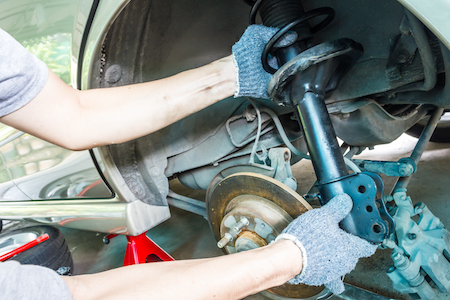
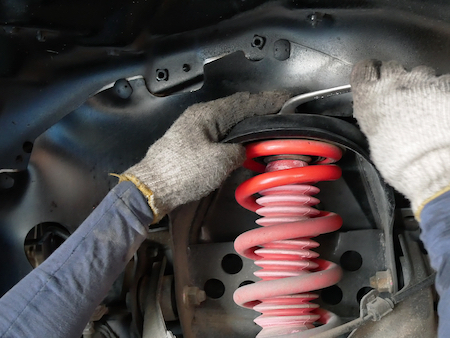
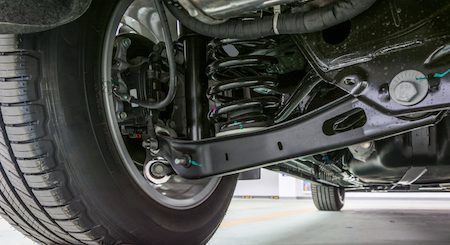 Your shocks and struts are designed to last anywhere from 50,000 to 100,000 miles. However, those are general guidelines based on all the cars on the road today. The vehicle you drive comes with its own set of guidelines; consult your owner’s manual for more specific ranges. It also depends on your driving patterns. Someone who drives in city traffic every day, just a few miles of stop and go driving, will have different results than a performance vehicle that drives up and down the mountain all the time.
Your shocks and struts are designed to last anywhere from 50,000 to 100,000 miles. However, those are general guidelines based on all the cars on the road today. The vehicle you drive comes with its own set of guidelines; consult your owner’s manual for more specific ranges. It also depends on your driving patterns. Someone who drives in city traffic every day, just a few miles of stop and go driving, will have different results than a performance vehicle that drives up and down the mountain all the time.
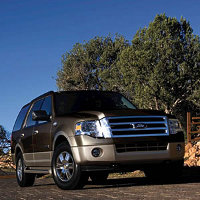
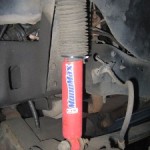
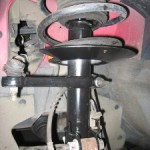
 out, damaged or leaking. Leaking is easy enough to see – just look for oil or wetness on the outside of the shock or strut. Damage is also fairly easy to see – look for a broken mount, badly dented housing, etc. But wear is often more of a subjective thing to judge. There are also instances where the original equipment shocks may not be worn, damaged or leaking, but may not be adequate for the job they’re being asked to do. In such cases, upgrading the suspension with stronger, stiffer or some type of special shock and strut may be recommended to improve handling (for trailer towing, hauling overloads or other special uses).
out, damaged or leaking. Leaking is easy enough to see – just look for oil or wetness on the outside of the shock or strut. Damage is also fairly easy to see – look for a broken mount, badly dented housing, etc. But wear is often more of a subjective thing to judge. There are also instances where the original equipment shocks may not be worn, damaged or leaking, but may not be adequate for the job they’re being asked to do. In such cases, upgrading the suspension with stronger, stiffer or some type of special shock and strut may be recommended to improve handling (for trailer towing, hauling overloads or other special uses).